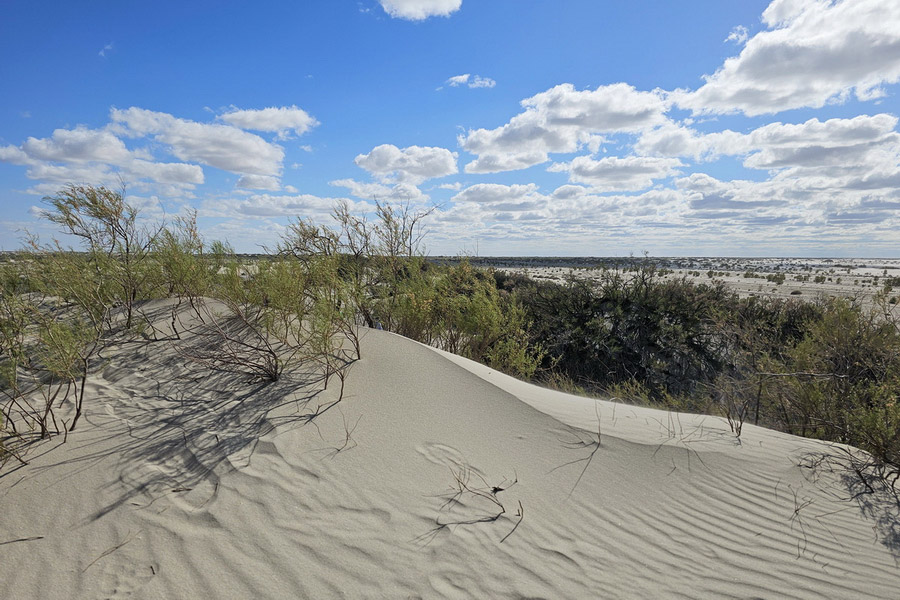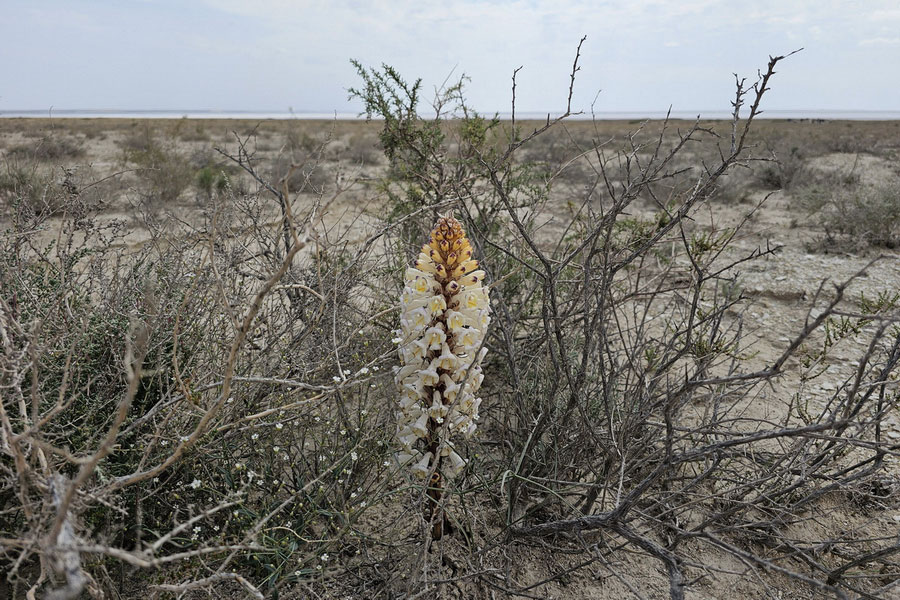
Barsa-Kelmes (Barsakelmes) is a nature reserve in the Kyzylorda region of Kazakhstan. It is shrouded in secrets and legends. The name of this locality translates from Kazakh as "if you go– you won't come back." The Barsa-Kelmes Nature Reserve is part of the UNESCO World Network of Biosphere Reserves.
There are many protected areas in Kazakhstan, but Barsa-Kelmes is the only one with extremely poor environmental conditions. The fact is that there used to be a large Aral Sea here. Now it is a zone of ecological catastrophe on a global scale. Barsa-Kelmes together with the drained bottom of the Aral Sea occupies almost 51 thousand hectares. The protected area, established in 1939, extends over 37 hectares. Previously, Barsa-Kelmes was an island, and with the drying of the Aral Sea, a tract appeared here.
For the first time, the animal and plant world of Barsa-Kelmes began to be studied in 1848. Then the expedition came to explore the Aral Sea. In 1900, the study of the island continued. Later, endangered species of animals began to be imported here.
Today, hundreds of species of animals and birds live in Barsa-Kelmes – many of them are listed in the Red Book. For example, marbled teal, curly pelican, snake-eater, little white heron, black-bellied grouse, savka, steppe eagle, gyrfalcon, gazelle, white-eyed dipper, saja, whooper swan, golden eagle, brown pigeon, jack, saigak, Turkmen kulan, eared hedgehog, rare dwarf jerboa and others. There are also 278 species of plants growing here.

The reserve studies climatic processes, desertification, the formation of biodiversity and relief, and much more. This makes it possible to understand the evolutionary and adaptive processes of living organisms and plants to changing factors of nature.
In addition to Barsa-Kelmes, there is another site in the reserve of the same name – Kaskakulan. It occupies almost 110 hectares, 68 of which are protected core.
Barsa-Kelmes became known to a wide circle thanks to the story of Boris Lavrenev "Forty-first". Also in Soviet times, they wrote about Barsa-Kelmes in the newspapers, they say that an ancient flying lizard lives here. Then the terrain was prescribed and UFO landings, and time machines. In the 1980s, the future writer Sergei Lukyanenko came up with a legend that people disappear here. He told the truth only in 2002. But there are also a few facts that are similar to the truth. In 1935, an expedition of topographers disappeared in Barsa-Kelmes. Three months later, the members of the expedition returned, assuring that they had been absent for only three days. They also tell about escaped prisoners. According to them, they spent two years on Barsa-Kelmes, but in fact they were absent for several decades.
There is a graveyard of ships near the reserve. Once they walked on the Aral Sea, but today they resemble the scenery from a disaster movie. Please note that visiting the Barsa-Kelmes Nature Reserve without a guide is dangerous.

